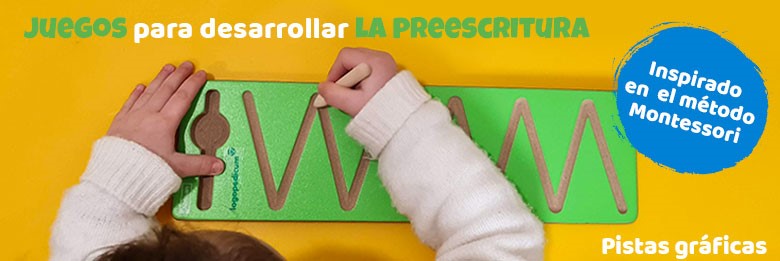
Aprender es modificar o adquirir nuevas habilidades, destrezas, conocimientos, conductas y valores mediante la experimentación, el estudio, la observación, el razonamiento o la instrucción. Múltiples y variados juegos disponibles hoy en día, desde los más clásicos hasta los más innovadores, pueden ser grandes herramientas para construir una variedad de aprendizajes: lectoescritura, matemáticas, razonamiento y resolución de problemas, etc. aportando motivación e interés a los jugadores. Más allá de la estimulación de las inteligencias múltiples, fomentaremos la autoestima, incentivaremos la cooperación y el trabajo en equipo y mejoraremos el comportamiento y la actitud, entre otros muchos aspectos.
 Auditory Memory Caterpillar
29,90 € (VAT not included)
Auditory Memory Caterpillar
29,90 € (VAT not included)
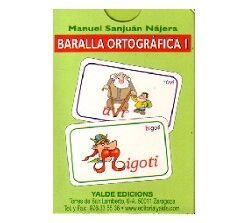 Baraja ortográfica
5,50 € (VAT not included)
Baraja ortográfica
5,50 € (VAT not included)
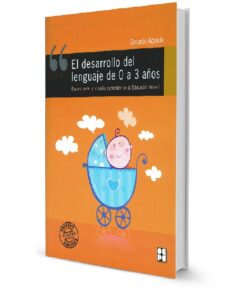 El Desarrollo del Lenguaje de 0 a 3 Años. Bases para un diseño curricular en la Educación Infantil
25,95 € (VAT not included)
El Desarrollo del Lenguaje de 0 a 3 Años. Bases para un diseño curricular en la Educación Infantil
25,95 € (VAT not included)
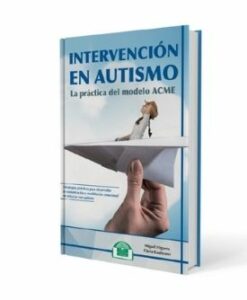 Intervención en autismo
21,15 € (VAT not included)
Intervención en autismo
21,15 € (VAT not included)
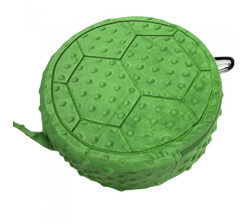 Vibrating turtle cushion
Sold out (VAT not included)
Vibrating turtle cushion
Sold out (VAT not included)
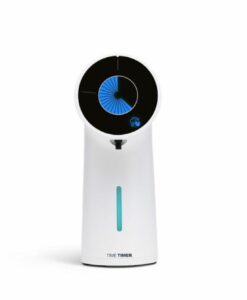 Time Timer Wash and Soap - Hands free
66,00 € (VAT not included)
Time Timer Wash and Soap - Hands free
66,00 € (VAT not included)
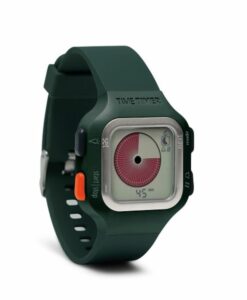 Adult Time Timer
71,90 € (VAT not included)
Adult Time Timer
71,90 € (VAT not included)
Showing 1–36 of 76 resultsSorted by latest
Price filter
No account yet?
Create an AccountClear visual material consisting of 120 cards or drawings that facilitate grammatical work: morpho-syntax, ... as they illustrate the different types of pronouns (possessive, reflexive, etc.). Concretely, it allows to enrich the content of the language in a dynamic and entertaining way. At the bottom of the card we can find an example sentence to encourage its proper use (presented in English but easily adaptable to other languages). This material is especially recommended for those children with linguistic and communicative disabilities who need to stimulate or re-educate oral or written language.
The pack contains a metal box for storage and transport of the cards. It contains an explanatory card with multiple activities to do in several languages.
https://logopedicum.com/wp-content/uploads/2015/09/trabajando-los-pronombres-247x300.jpg 34.49 instock Areas of DevelopmentHearing and languageLANGUAGELEARNINGSMorphology and syntaxReading and writingReading and writing 0 0.00 0 https://logopedicum.com/wp-content/uploads/2015/09/trabajando-los-pronombres-247x300.jpg 5115722622832 34.49 28.50 0.00 0.00 2015-09-09T18:18:15+02:00Photographic material consisting of 8 large cards illustrating different daily activities broken down into 3-step sequences. Using these sequences we can work on lexical evocation, morpho-syntax, narrative discourse, etc. These cards can be used with both children and adults as a whole sequence or as an individual card. They are a flexible and fun resource for language re-education and oral and written communication.
The material consists of 16 sequences, of three photos each, portraying a series of everyday situations such as: making a bed, wrapping a gift, dressing a baby,... https://logopedicum.com/wp-content/uploads/2016/07/secuencias-basicas-247x300.jpg 41.50 instock Areas of DevelopmentHearing and languageLANGUAGEMorphology and syntaxNarrative discourse 0 0.00 0 https://logopedicum.com/wp-content/uploads/2016/07/secuencias-basicas-247x300.jpg 471372212051 41.50 39.90 0.00 0.00 2016-07-20T18:18:46+02:00Fun and dynamic material to work on oral and written language. The pack consists of 124 cards (62 verbs) illustrated representing actions of everyday life. These attractive pictures allow working with children and adults offering multiple possibilities (memory, matching, relating, ...) to affect all the dimensions of language and communication that the therapist wishes.
The set consists of a metal box for card storage and transport.
Latex finger cots to protect a finger in isolation when working inside the patient's oral cavity.
Available in pack of 100 units.
https://logopedicum.com/wp-content/uploads/2013/12/dedil-latex-2-247x300.jpg 3.96 instock OROFACIAL MYOLOGYExploration and diagnosisHYGIENE AND DISINFECTIONProtection and safety 0 0.00 0 https://logopedicum.com/wp-content/uploads/2013/12/dedil-latex-2-247x300.jpg 164140143157228 3.96 3.60 0.00 0.00 2013-12-02T23:32:41+01:00Box with 52 cards illustrated with beautiful drawings to encourage mentalist work. Each card represents a curious or absurd situation that the person will have to infer and argue linguistically, specifically favoring the production of verbs. At the bottom of the card, there is a sentence that helps us to create the expected statement (presented in English but easily adaptable to other languages). Material especially recommended for those children with pragmatic, abstraction, language dysabilities, ... It allows both individual and group work.
The pack contains a metal box for storage and transport of the cards. In addition, it contains an explanatory card with multiple activities to do in several languages.
https://logopedicum.com/wp-content/uploads/2015/10/aprendiendo-a-inferir-2-247x300.jpg 24.81 instock LANGUAGEMorphology and syntaxCommunication and pragmaticsLEARNINGSReading and writing 0 0.00 0 https://logopedicum.com/wp-content/uploads/2015/10/aprendiendo-a-inferir-2-247x300.jpg 148221231226150 24.81 20.50 0.00 0.00 2015-10-26T21:12:42+01:00La atención educativa a los niños con necesidades educativas asociadas a altas capacidades intelectuales es objeto de estudios y actuaciones por parte de investigadores, la Administración Educativa y por los propios profesores y padres. A pesar de ello, las necesidades específicas de los alumnos superdotados o con talento no han sido suficientemente consideradas en muchos de nuestros centros educativos.
De este problema se derivan otros también importantes referidos a cuáles son las características de los superdotados, cómo, quién y cuándo puede identificarlos y cómo, quién y cuándo debe intervenir en su atención educativa.
En este libro no se busca, evidentemente, dar respuesta a todas estas cuestiones pero se pretende que se constituya en un instrumento de apoyo a padres y profesores en el trato con sus hijos o alumnos con características asociadas a la superdotación intelectual.
En la primera parte se intenta sintetizar algunos de los aspectos más relevantes relacionados con la conceptualización y características de la superdotación y las altas capacidades.
La segunda parte está dedicada a la identificación de la superdotación intelectual en el contexto familiar y escolar. En primer lugar se realiza una aproximación al concepto mismo de identificación y evaluación desde el modelo de necesidades. A continuación se exponen con cierto detenimiento nuevos instrumentos elaborados desde la perspectiva de la identificación de las necesidades educativas de los alumnos. Tienen la particularidad de ser de fácil aplicación y de rápida corrección e interpretación, facilitadas por el correspondiente programa informático y los ejemplos explicativos que se proponen en el CD-ROM. La tercera parte de este libro está dedicada a la intervención. Se ha puesto especial cuidado en instar a los alumnos a la búsqueda de aplicaciones a la vida diaria, tanto en las relaciones interpersonales como con el medio. Buscamos también la educación en valores y propiciar actuaciones sensatas y con buen juicio. El eje que guiará toda la exposición es la perspectiva práctica. Lo que, a nuestro modo de ver, deben principalmente conocer los profesores, y en su justa medida los padres, respecto a estos alumnos es la forma de llegar a determinar sus necesidades educativas específicas y la forma de poder prestar a todos y cada uno la ayuda pedagógica más adecuada en los diferentes momentos de su escolarización. https://logopedicum.com/wp-content/uploads/2015/11/9788478699667-c--pia-247x300.jpg 26.94 instock BooksReading and writing 0 0.00 0 https://logopedicum.com/wp-content/uploads/2015/11/9788478699667-c--pia-247x300.jpg 16222432157132 26.94 25.90 0.00 0.00 2015-11-12T17:21:43+01:00Material consisting of 100 hollow plastic cubes, 2 cm, with hooks to create strips or shapes, lines, areas or volumes. They allow numerical analysis, their decomposition, the development of mathematical language, etc., besides being an ideal support to work abstract concepts related to phonological awareness.
https://logopedicum.com/wp-content/uploads/2015/07/multicubos-247x300.jpg 42.35 instock Areas of DevelopmentCalculation and mathematical languageHearing and languageLANGUAGELearning CornersLEARNINGSLogical reasoning and mathsLogical-mathematicalPhonetics and phonologyReading and writingReading and writingReading and writing 0 0.00 0 https://logopedicum.com/wp-content/uploads/2015/07/multicubos-247x300.jpg 143228140128148 42.35 35.00 0.00 0.00 2015-07-21T17:15:42+02:00High quality beech wood double-sided boards on which are represented the different numbers from 1 to 10, on one side, and the corresponding quantity in the form of colored circles on the other. Very interesting tool to facilitate the learning of the concept - numerical quantity, as well as to help visualize mathematical operations.
The set contains 36 pieces and a wooden tray for storage and transport.
https://logopedicum.com/wp-content/uploads/2015/06/juego-madera-calculo-247x300.jpg 19.24 instock Calculation and mathematical languageLEARNINGSWood 0 0.00 0 https://logopedicum.com/wp-content/uploads/2015/06/juego-madera-calculo-247x300.jpg 14014523122447 19.24 15.90 0.00 0.00 2015-06-29T11:48:07+02:00Basado en la obra "Vocabulario técnico-científico en Motricidad Orofacial" publicada el año 2007 por el comité de Motricidad Orofacial de la Sociedad Brasilera de Fonoaudiología; en busca de facilitar el acceso a diversos términos afines al área, homogeneizar el uso de estos, entre los especialistas y responder a la necesidad de contar con un documento que aborde este tema en español, surge esta obra, la cual cuenta con 2.000 vocabulos y definiciones revisados, examinados y actualizados, en el intento de compilar en su totalidad la terminología, relacionada al Sistema Estomatognático, de las diversas especialidades de la medicina como: Ortodoncia, Otorrinolaringología, Neurología, Fisiología, Fisioterapia, etc.
https://logopedicum.com/wp-content/uploads/2014/09/diccionario-terminologio-de-motricidad-orofacial-247x300.jpg 24.28 instock BooksOrofacial myology 0 0.00 0 https://logopedicum.com/wp-content/uploads/2014/09/diccionario-terminologio-de-motricidad-orofacial-247x300.jpg 14814536162231 24.28 23.35 0.00 0.00 2014-09-16T12:58:32+02:00Photographic material to work on oral and written language. The set consists of 168 cards (84 pairs) extra large ideal to encourage logical relationships, creating pairs that also allow to generate linguistic samples (increase of vocabulary, semantic fields, sentence structuring, ...) with patients of all ages. The white background of the cards facilitates the identification of the pictures.
Perfect resource for storytelling, description, questioning, deduction and other implicit skills.
Logical pairs represented: paint-broach, pilot-airplane, astronaut-rocket, basketball-basket, bathtub-towels, batteries-flashlight, butter-bread, books-backpack, chair-table, hen-eggs, circus-clown, flowers-vase, knife-fork, etc.
The set includes 168 cards with attractive photographs, an instruction book with game ideas and a metal box for storage and transport of the material.